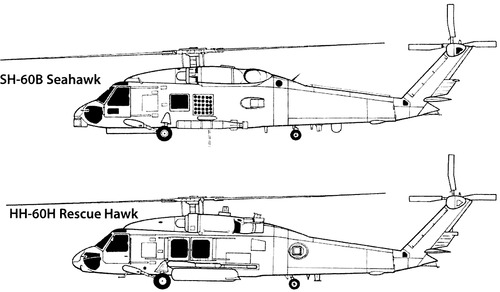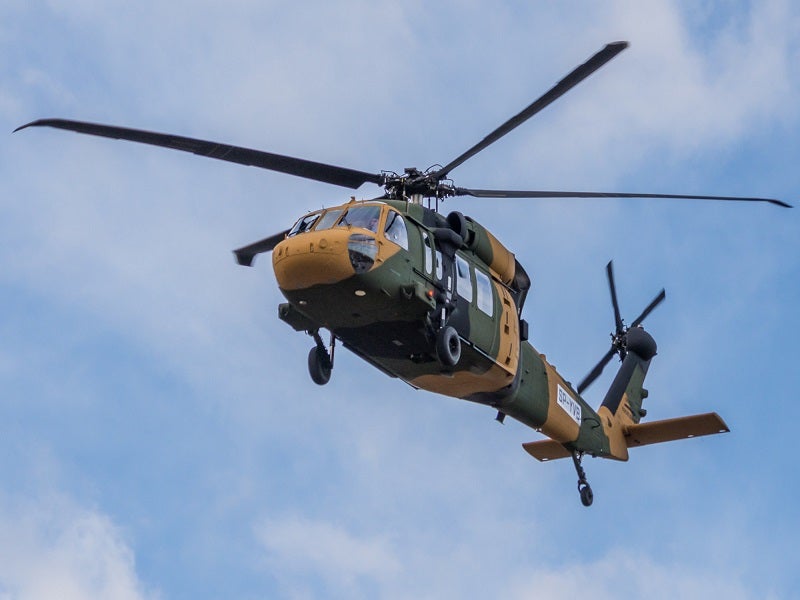Exploring the Capacities of the Sikorsky S 70: A Comprehensive Review
Exploring the Capacities of the Sikorsky S 70: A Comprehensive Review
Blog Article
High-Performance Multi-Role Rotorcraft Featuring Advanced Cockpit Technologies and Integrated Sensing Unit Systems
The realm of rotorcraft technology has seen noteworthy improvements in recent times, specifically in the world of high-performance multi-role rotorcraft outfitted with sophisticated cabin innovations and perfectly integrated sensor systems. These innovations have not just increased the operational capacities of rotorcraft however have likewise significantly impacted modern-day air travel operations on various fronts. From boosted objective flexibility to improved functional effectiveness, the convergence of innovative cockpit technologies and incorporated sensor systems has actually introduced a new period of possibilities for rotorcraft applications. In the adhering to conversation, we will discover the evolution of rotorcraft modern technology, look into the world of sophisticated cockpit technologies, and take a look at the implications of incorporated sensor systems on the functional flexibility and performance of modern rotorcraft.
Advancement of Rotorcraft Technology
The advancement of rotorcraft modern technology has actually been noted by considerable improvements in the rules of aerodynamics, products, and propulsion systems, shaping the abilities and efficiency of modern-day rotorcraft. In addition, innovations in propulsion systems, consisting of a lot more powerful engines and innovative propulsion technologies, have actually made it possible for rotorcraft to accomplish higher elevations, faster rates, and higher payloads.
These innovations have not just transformed the capabilities of rotorcraft yet have also increased their applications throughout various sectors, consisting of military, business, and emergency services. The continual development of rotorcraft technology proceeds to drive advancement in the field, pressing the boundaries of what is feasible and shaping the future of upright flight.
Advanced Cabin Innovations
Building upon the fundamental improvements in aerodynamics, products, and propulsion systems, the world of rotorcraft innovation now moves emphasis towards introducing Advanced Cockpit Innovations. The assimilation of innovative technologies within the cabin environment plays a crucial function in boosting the operational capacities, safety, and effectiveness of modern rotorcraft. sikorsky s 70. Advanced Cockpit Innovations include a broad variety of features made to supply pilots with enhanced situational understanding, structured data administration, and instinctive control interfaces
One of the vital improvements in cabin design is the application of glass cockpits, which replace typical analog gauges with high-resolution screens. These electronic systems supply customizable designs, real-time information assimilation, and boosted readability, enabling pilots to access essential information at a glance. Progressed avionics systems, such as fly-by-wire controls and boosted fact display screens, are revolutionizing how pilots communicate with the aircraft, allowing for precise control and enhanced decision-making capabilities.


Including innovative cockpit innovations not just improves pilot performance yet likewise adds to total goal effectiveness and security in complicated operational settings. By leveraging cutting edge technologies within the cabin, rotorcraft producers are setting brand-new standards for functional excellence and objective success.
Integrated Sensor Solutions
With the evolution of rotorcraft modern technology, the integration of innovative Integrated Sensor Equipment has come to be critical in boosting operational effectiveness and safety and security. These Integrated Sensor Equipments encompass a large array of innovations that give important data for different features such as navigating, monitoring, targeting, and ecological monitoring. By flawlessly integrating sensing units like radars, cameras, lidar, and infrared systems into rotorcraft, drivers can gain from improved situational understanding, boosted mission capabilities, and minimized pilot work.
One trick advantage of Integrated Sensor Solutions is their capacity to collect real-time information and give actionable insights to pilots and objective drivers. Progressed radar systems can identify and track targets over long ranges, allowing for early threat detection and effective reaction planning. Furthermore, integrating infrared and electro-optical cams enables rotorcraft to conduct reconnaissance and surveillance missions with precision and accuracy.
Fundamentally, the integration of innovative sensor innovations into rotorcraft not only enhances operational effectiveness but also adds significantly to overall goal success and staff safety and security. As rotorcraft remain to progress, the function of Integrated Sensor Systems will unquestionably stay at the forefront of innovation in the aerospace industry.
Functional Adaptability and Effectiveness
Enhancing operational versatility and performance in rotorcraft is an all-natural progression from the integration of innovative Integrated Sensing unit Systems. By leveraging the insights and data given by these innovative sensor systems, rotorcraft can optimize their efficiency across various goals and atmospheres.
Functional adaptability includes the capacity of rotorcraft to adapt to different functions and scenarios successfully. With sophisticated cockpit modern technologies and integrated sensing unit systems, rotorcraft can effortlessly transition in between tasks such as search and rescue, clinical evacuation, monitoring, and more. This adaptability enhances the rotorcraft's capacity to meet varied operational requirements without requiring considerable reconfiguration.
Effectiveness in rotorcraft procedures is vital for maximizing objective effectiveness and resource application. Integrated sensor systems play a pivotal function in boosting operational performance by offering real-time information on climate condition, surface mapping, target tracking, and a lot more. This information enables pilots to make educated choices swiftly, enhance trip courses, conserve fuel, and boost overall objective performance.
Effect On Modern Aeronautics Procedures

In addition, the combination of innovative sensors facilitates enhanced mission planning and implementation, allowing rotorcraft to execute a wide variety of jobs with enhanced precision. From search and rescue procedures to aerial firefighting and police missions, the capacities of modern rotorcraft furnished with innovative cockpit modern technologies and integrated sensor systems are exceptional.
In addition, the impact of these innovations extends past operational effectiveness see it here to cost-effectiveness and sustainability. By maximizing trip courses, fuel usage, and upkeep timetables, high-performance rotorcraft equipped with sophisticated cabin modern technologies and sensors contribute to lowering functional costs and environmental effect, making them indispensable possessions in modern air travel operations.
Final Thought
In final thought, the high-performance multi-role rotorcraft with innovative cockpit technologies and integrated sensor systems represents a considerable advancement in aeronautics technology. These developments improve operational flexibility and effectiveness, eventually affecting contemporary aeronautics procedures in a favorable method. The combination of these sophisticated innovations enables enhanced capacities and efficiency in different objective situations, showcasing the continued advancement of rotorcraft technology in the aviation sector.
The world of rotorcraft innovation has seen noteworthy developments in recent times, particularly in the world of high-performance multi-role rotorcraft outfitted with innovative cockpit technologies and seamlessly incorporated sensing unit systems. From enhanced mission convenience to enhanced operational performance, the merging of sophisticated cockpit modern technologies and incorporated sensor systems Check Out Your URL has ushered in a brand-new age of possibilities for rotorcraft applications. In the adhering to discussion, we will discover the development of rotorcraft technology, dive into the world of sophisticated cockpit technologies, and analyze the ramifications of integrated sensing unit systems on the operational convenience and effectiveness of modern rotorcraft.

Report this page